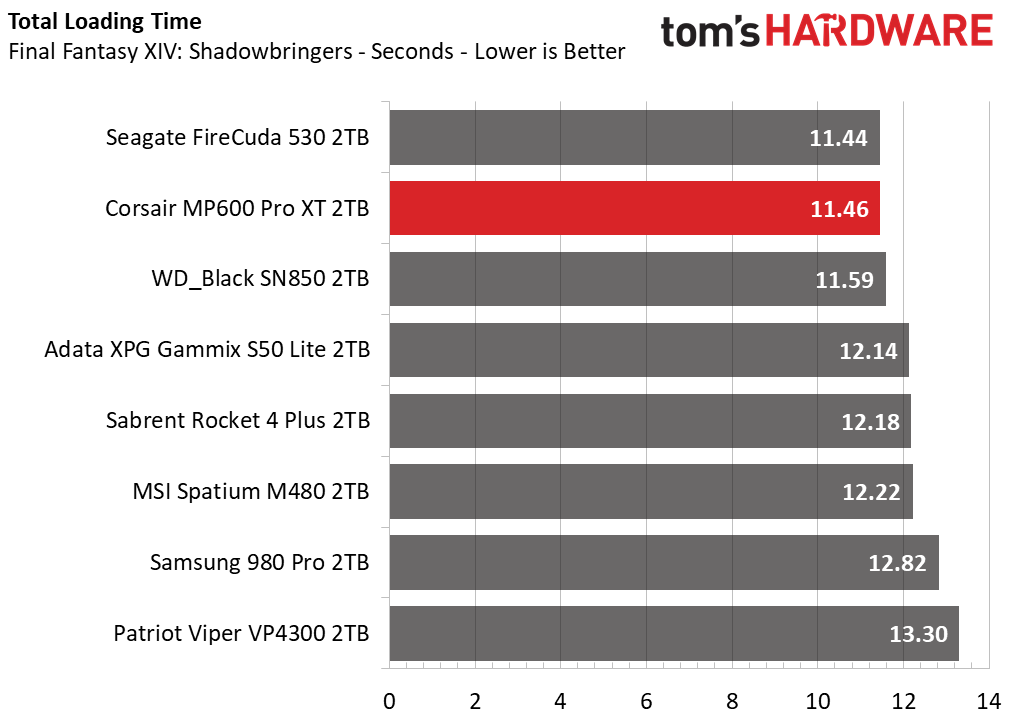Why you can trust Tom's Hardware
Comparison Products
Today, we put the MP600 Pro XT up against the best SSDs we’ve tested. These include the Seagate FireCuda 530, Samsung 980 Pro, WD_Black SN850, Patriot Viper VP4300, MSI Spatium M480, and Sabrent Rocket 4 Plus. For added perspective, we also threw in the Adata XPG Gammix S50 Lite, an entry-level PCIe 4.0 NVMe SSD.
Game Scene Loading - Final Fantasy XIV
Final Fantasy XIV Shadowbringers is a free real-world game benchmark that easily and accurately compares game load times without the inaccuracy of using a stopwatch.
The WD_Black SN850 came close, but it was still no match for the Corsair MP600 Pro XT in this benchmark. With a score that roughly matched the Seagate FireCuda 530, Corsair’s MP600 Pro XT was amongst the fastest SSDs at game loading that we’ve tested.
Transfer Rates – DiskBench
We use the DiskBench storage benchmarking tool to test file transfer performance with a custom dataset. We copy a 50GB dataset including 31,227 files of various types, like pictures, PDFs, and videos to a new folder and then follow-up with a reading test of a newly-written 6.5GB zip file.
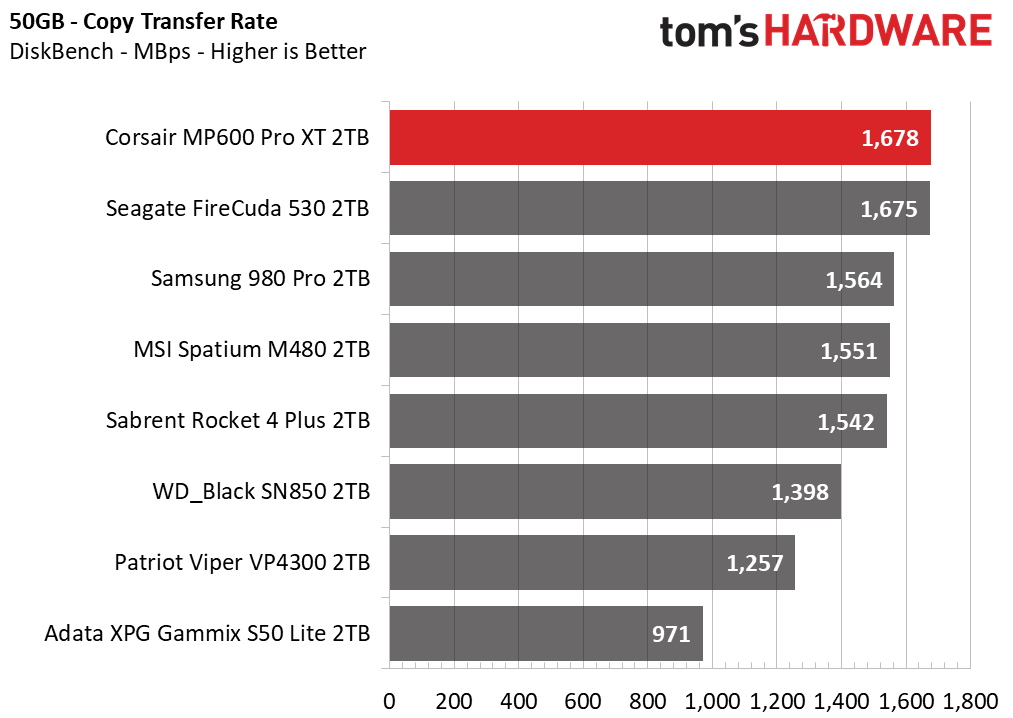
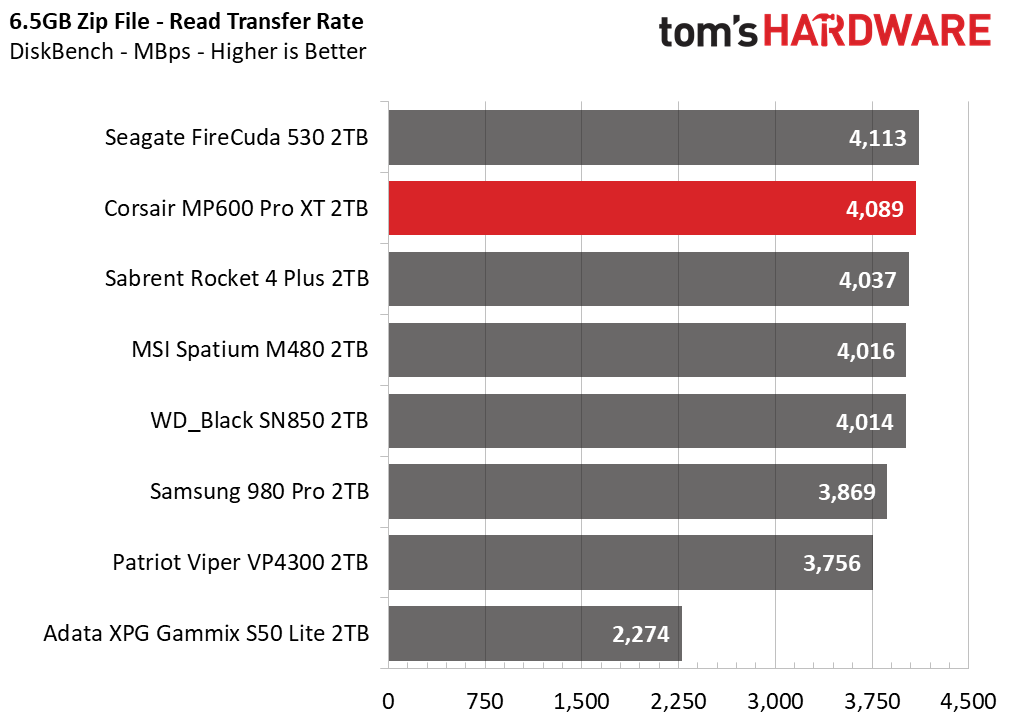
When it comes to handling your files, the MP600 Pro XT offered some of the most responsive performance in the group. It placed first in our 50GB file folder copy and ran a hair slower than the Seagate FireCuda 530 when we read back our test file. Neither the Samsung 980 Pro nor WD_Black SN850 came close to matching its speed.
Trace Testing – PCMark 10 Storage Test
PCMark 10 is a trace-based benchmark that uses a wide-ranging set of real-world traces from popular applications and everyday tasks to measure the performance of storage devices. The quick benchmark is more relatable to those who use their PCs for leisure or basic office work, while the full benchmark relates more to power users.
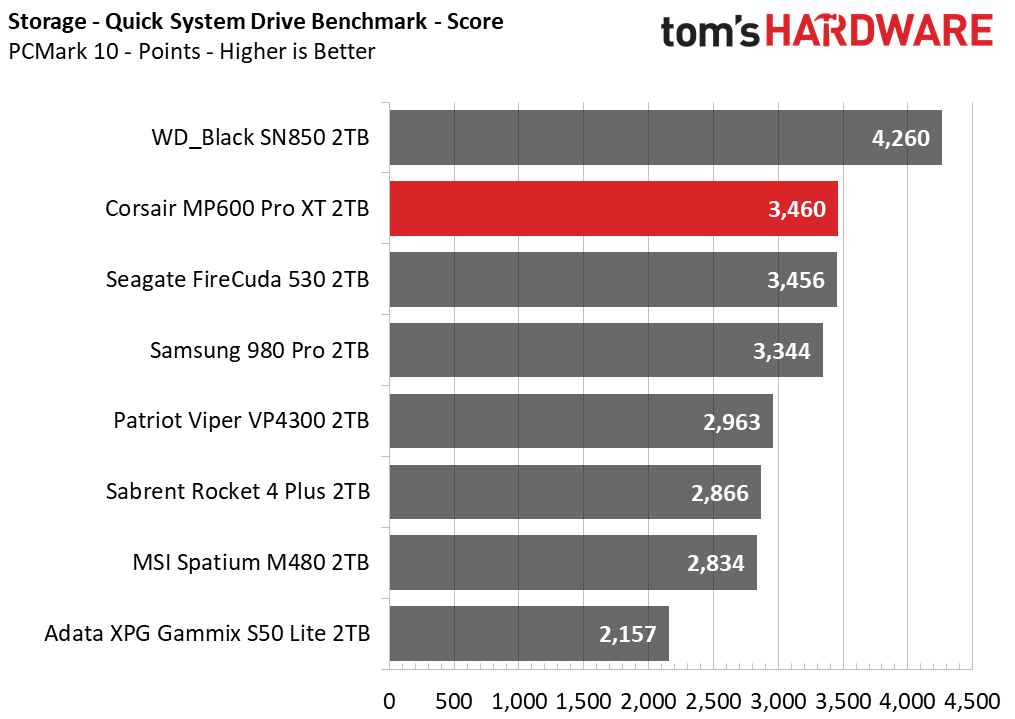
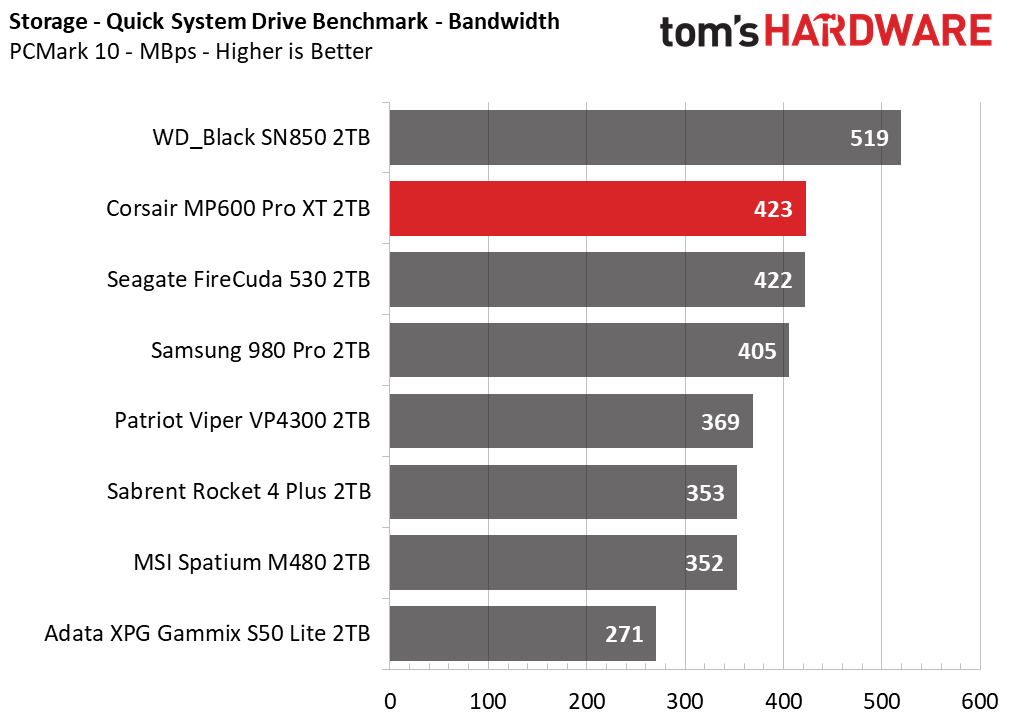
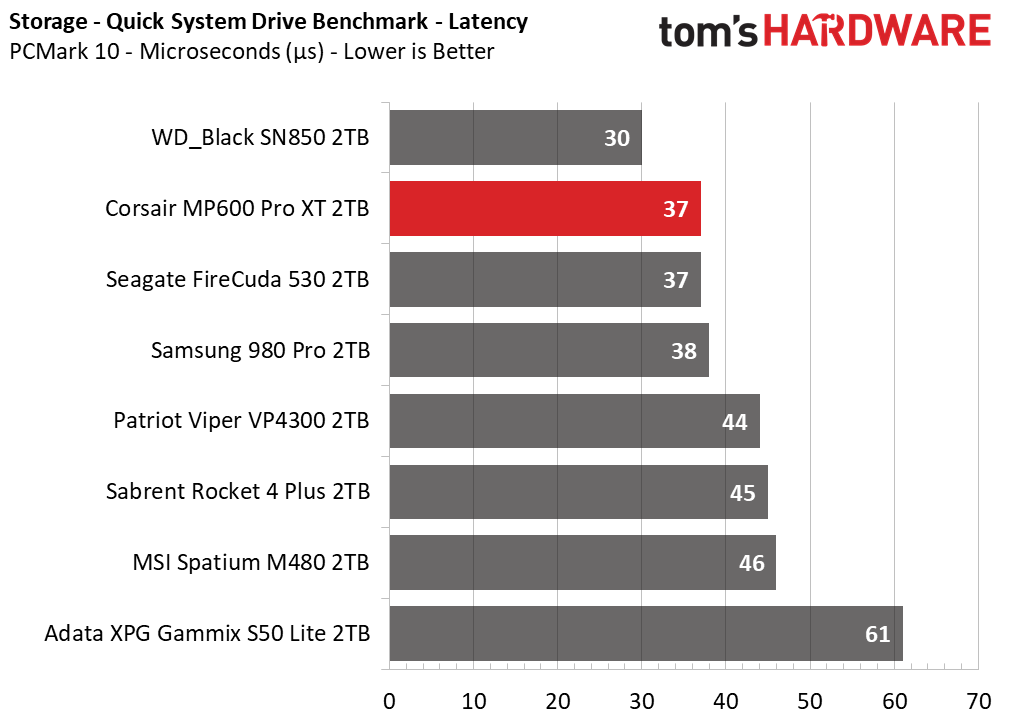
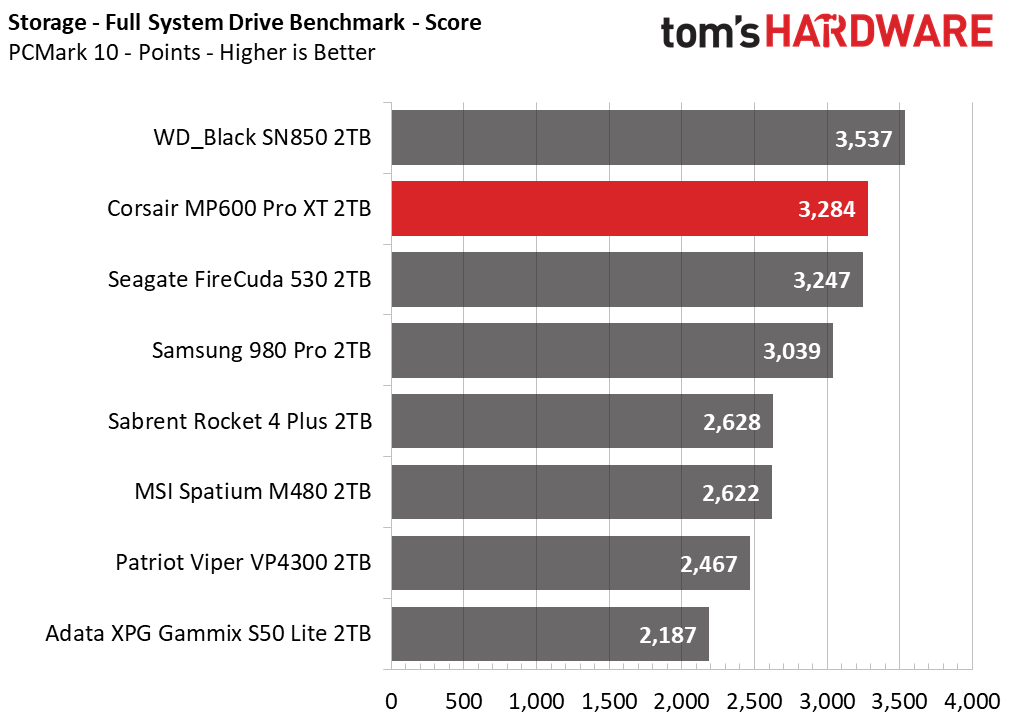
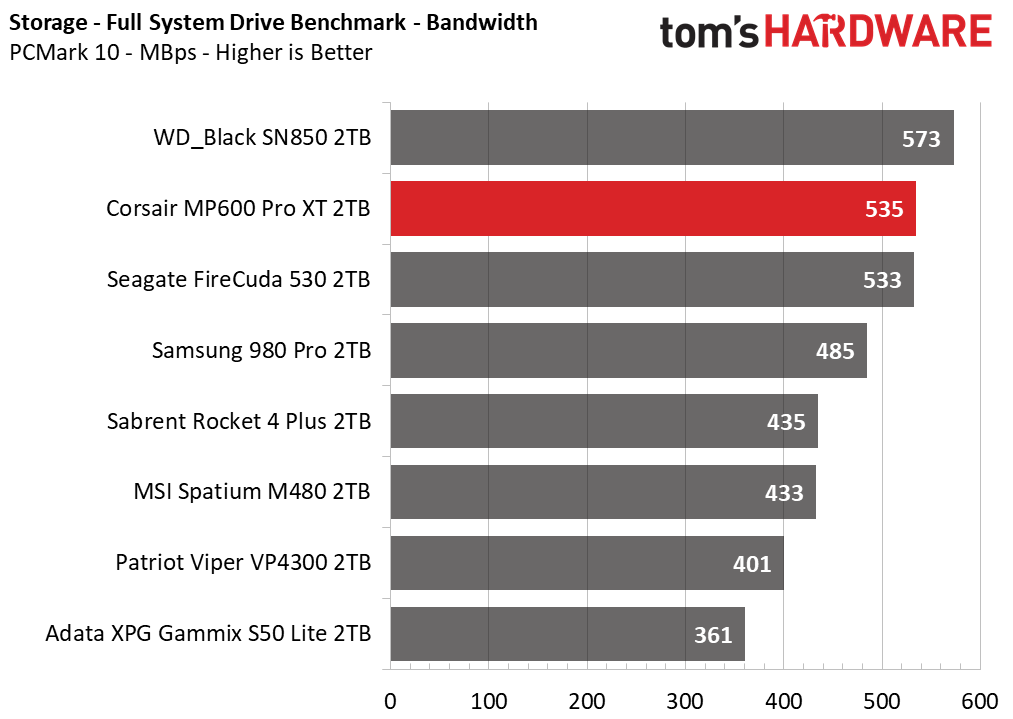
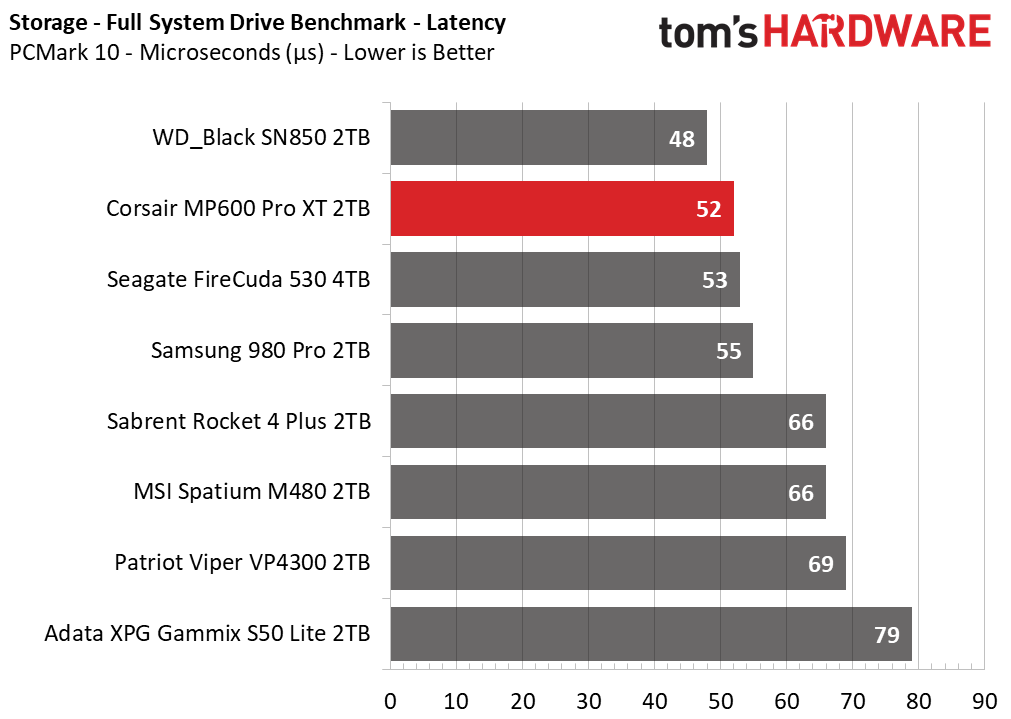
Again, the MP600 Pro XT outpaced the Samsung 980 Pro as well as the rest of the competition, but the WD_Black SN850 took the win this time. The WD_Black SN850 outperformed the group in both the Quick and Full System Drive benchmarks, but Corsair’s MP600 Pro XT came in a close second place.
Get Tom's Hardware's best news and in-depth reviews, straight to your inbox.
Synthetic Testing - ATTO / CrystalDiskMark
ATTO and CrystalDiskMark (CDM) are free and easy-to-use storage benchmarking tools that SSD vendors commonly use to assign performance specifications to their products. Both of these tools give us insight into how each device handles different file sizes.

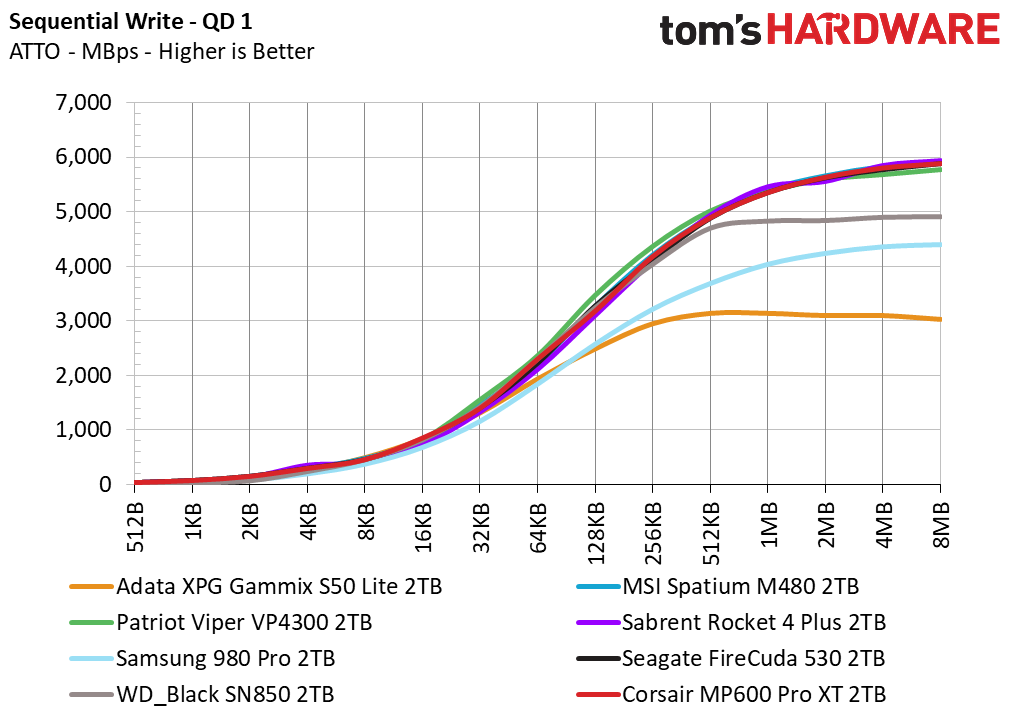
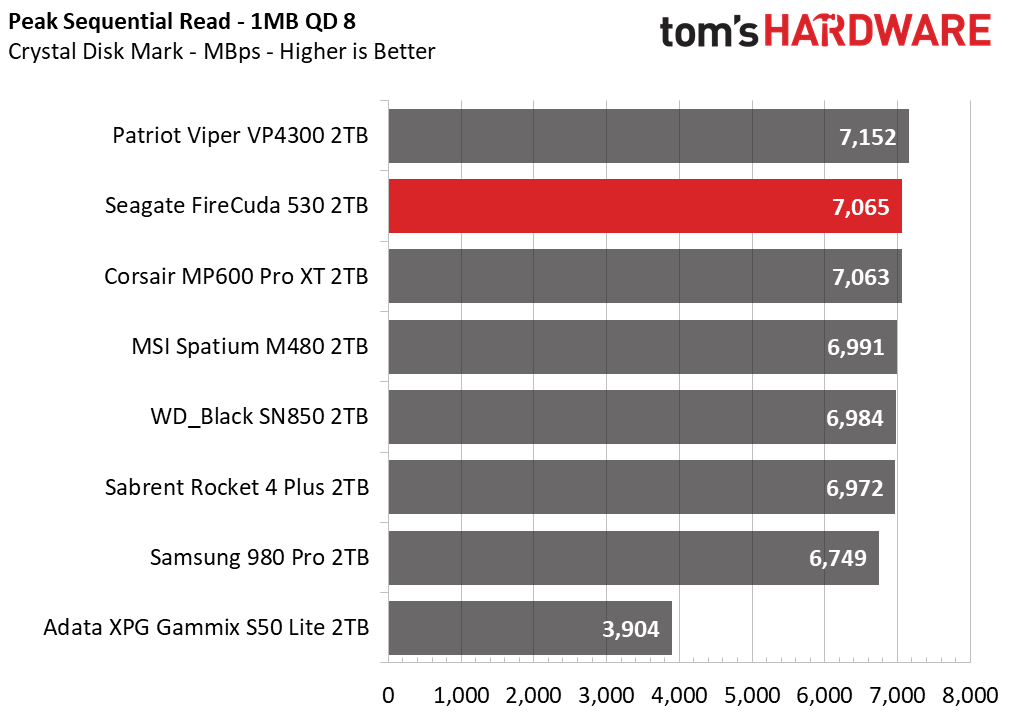
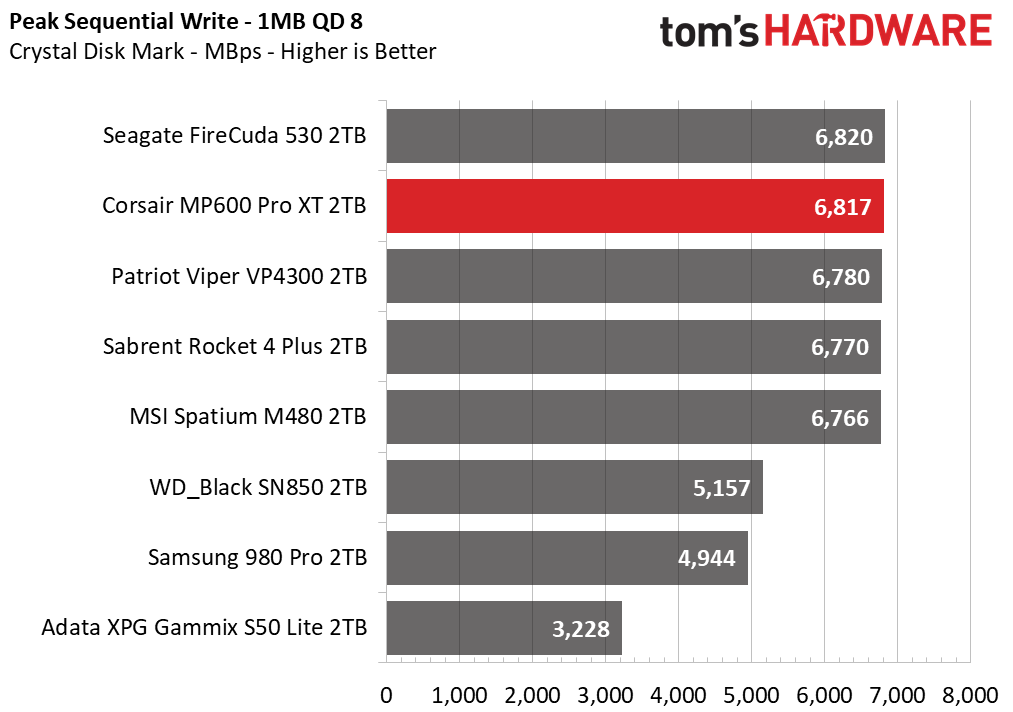
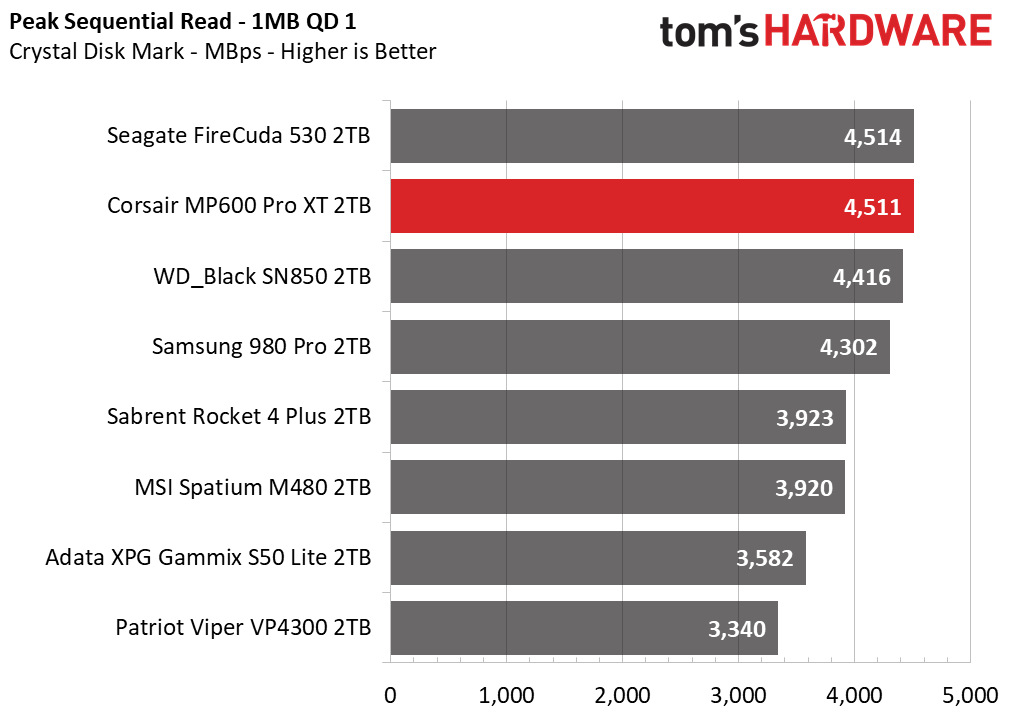
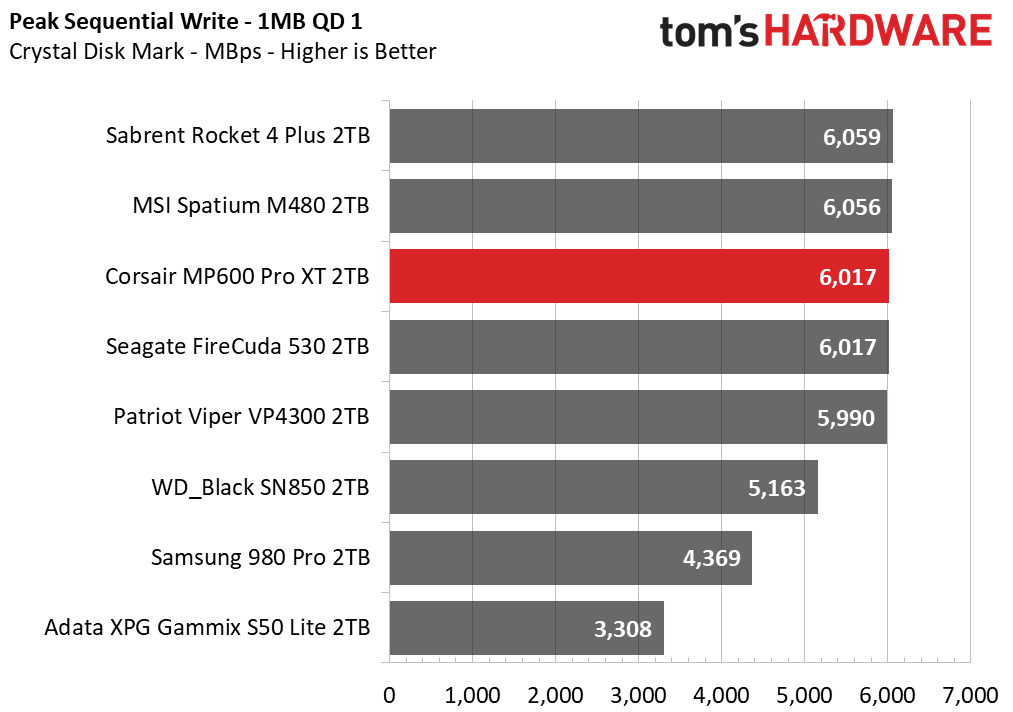
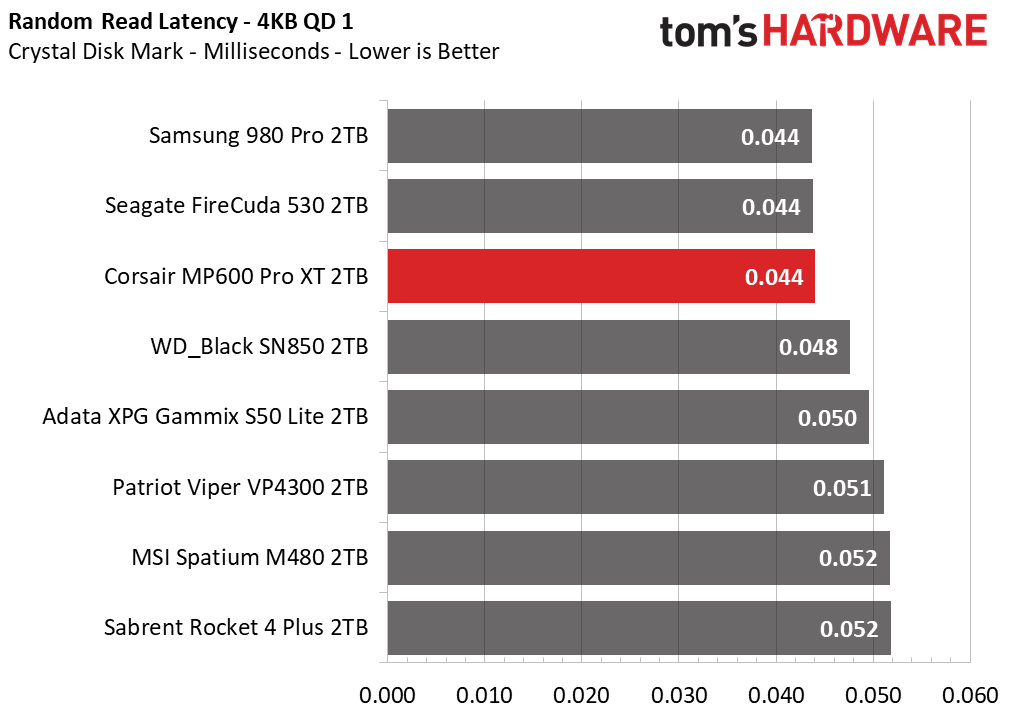
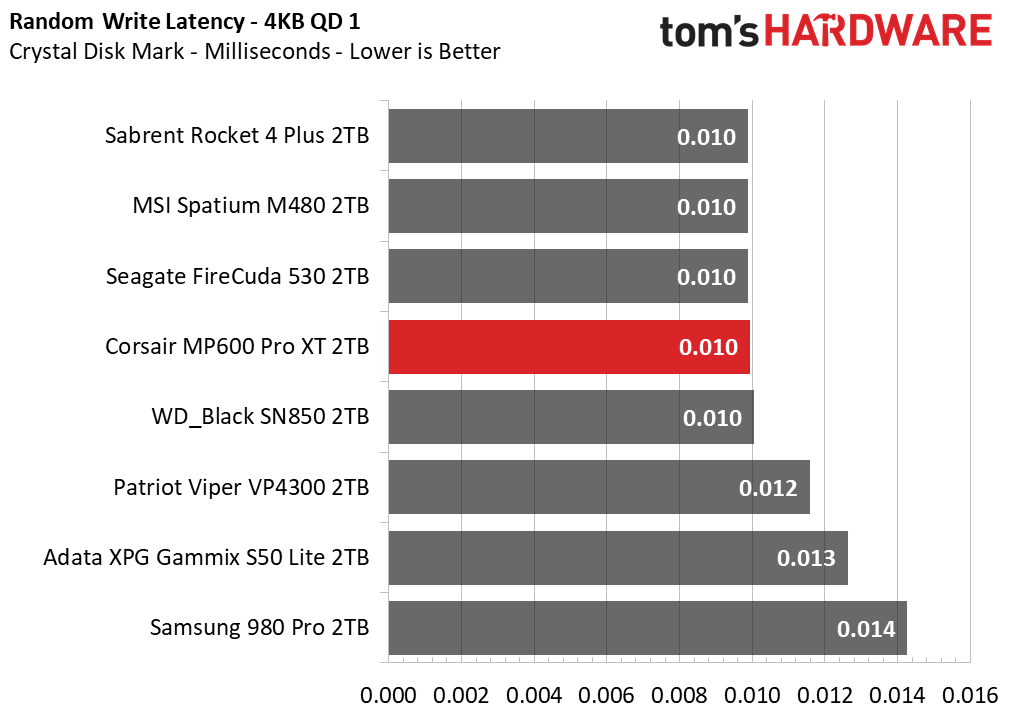

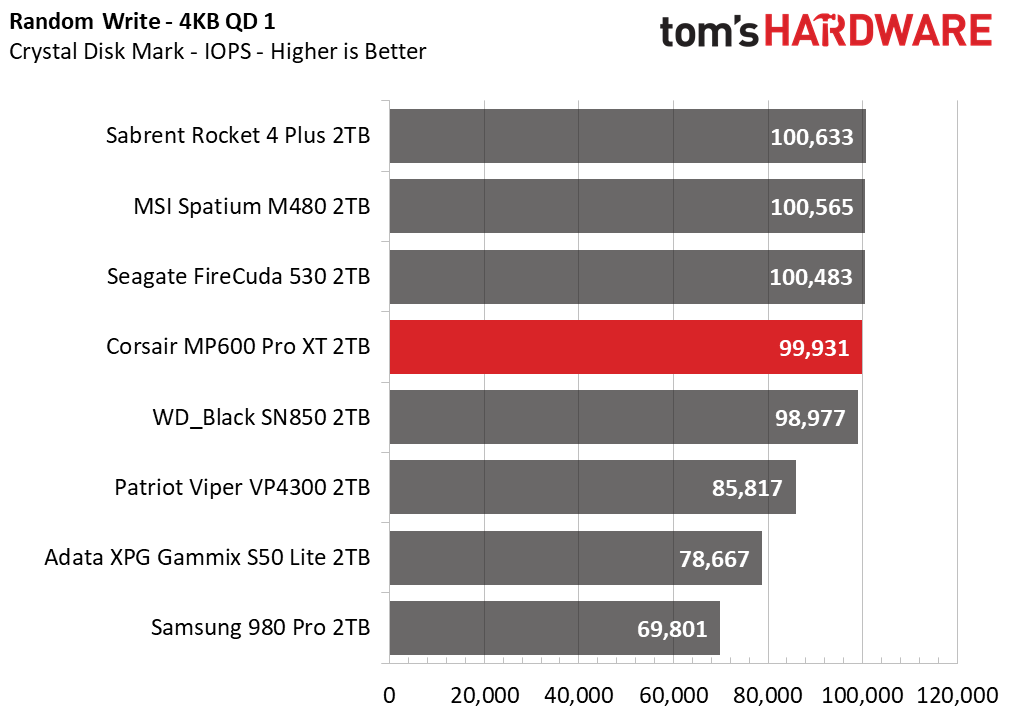

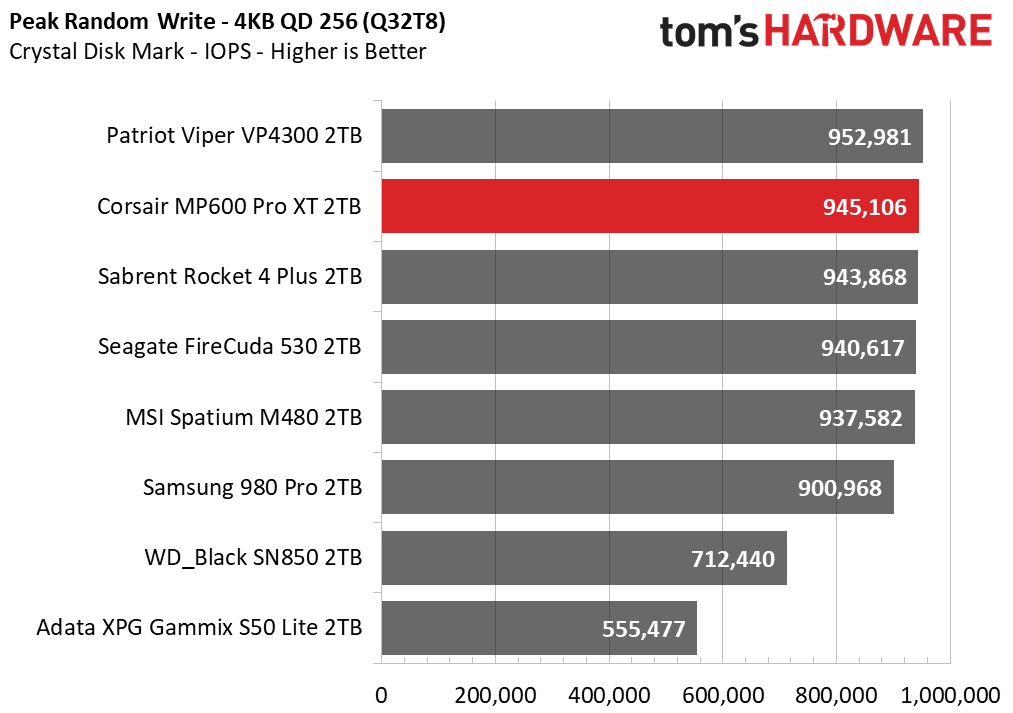


The MP600 Pro XT’s performance scales well across various blocks sizes and both sequential and random access, tying the Seagate FireCuda 530 once again. Samsung’s 980 Pro delivered slightly faster random read speeds at QD1, but Corsair’s MP600 Pro XT was nearly just as fast. Additionally, the MP600 Pro XT hit a peak of 1.5 million write IOPS, which is roughly 500,000 more IOPS than the Samsung SSD.
Sustained Write Performance and Cache Recovery
Official write specifications are only part of the performance picture. Most SSDs implement a write cache, which is a fast area of (usually) pseudo-SLC programmed flash that absorbs incoming data. Sustained write speeds can suffer tremendously once the workload spills outside of the cache and into the "native" TLC or QLC flash. We use iometer to hammer the SSD with sequential writes for 15 minutes to measure both the size of the write cache and performance after the cache is saturated. We also monitor cache recovery via multiple idle rounds.
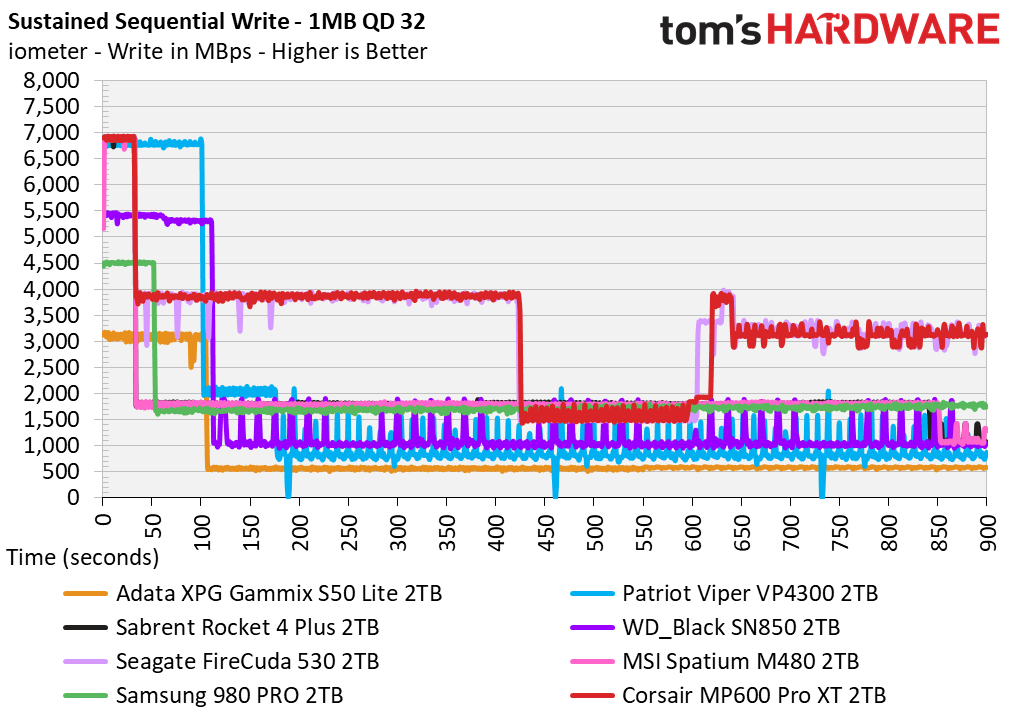
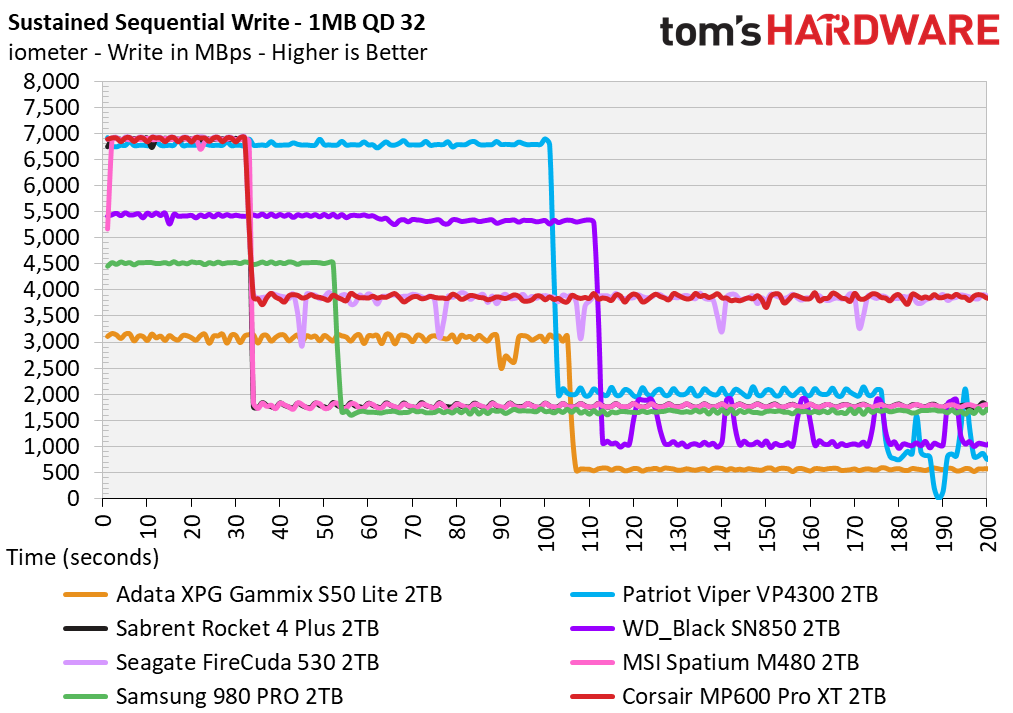
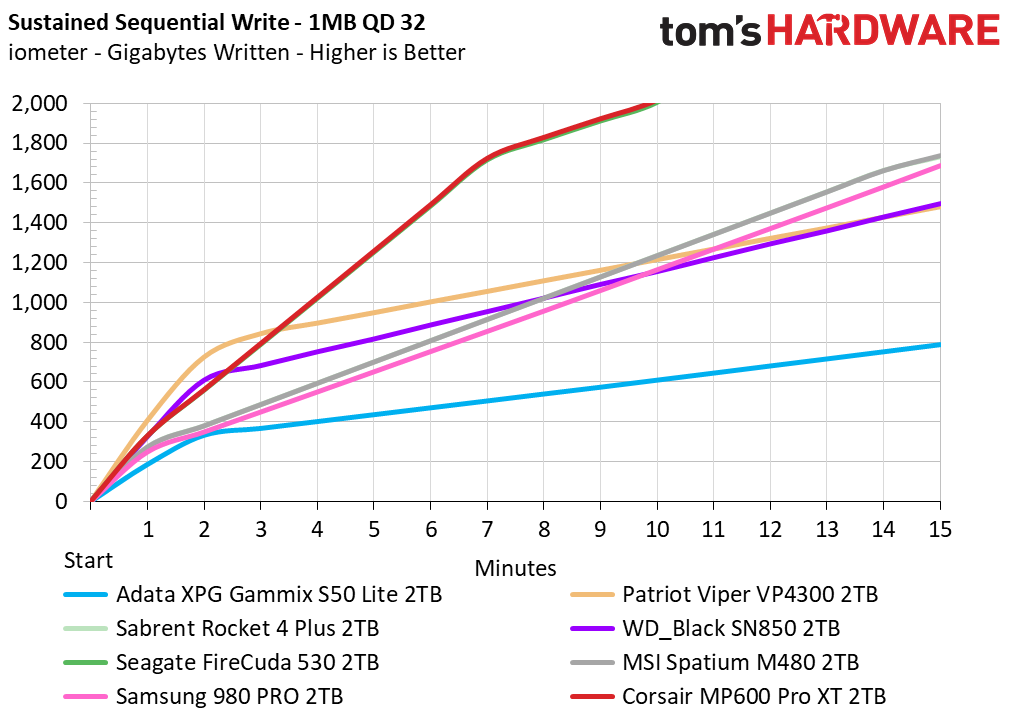


Corsair’s MP600 Pro XT features a large dynamic SLC cache that measured 225GB on our 2TB sample. It started off the write stream at 6.9 GBps until the cache filled. Once saturated, sustained write speeds fell to roughly 3.9 GBps for another 1.5TB before degrading once again to roughly 1.6 GBps (until full). Unfortunately, the MP600 Pro XT didn't recover its full write speed within the 30-minute idle window; it would only write at 3.9 GBps in each consecutive round.
Power Consumption and Temperature
We use the Quarch HD Programmable Power Module to gain a deeper understanding of power characteristics. Idle power consumption is an important aspect to consider, especially if you're looking for a laptop upgrade. Some SSDs can consume watts of power at idle while better-suited ones sip just milliwatts. Average workload power consumption and max consumption are two other aspects of power consumption, but performance-per-watt is more important. A drive might consume more power during any given workload, but accomplishing a task faster allows the drive to drop into an idle state more quickly, ultimately saving energy.
We also monitor the drive’s temperature via the S.M.A.R.T. data and an IR thermometer to see when (or if) thermal throttling kicks in and how it impacts performance. Bear in mind that results will vary based on the workload and ambient air temperature.
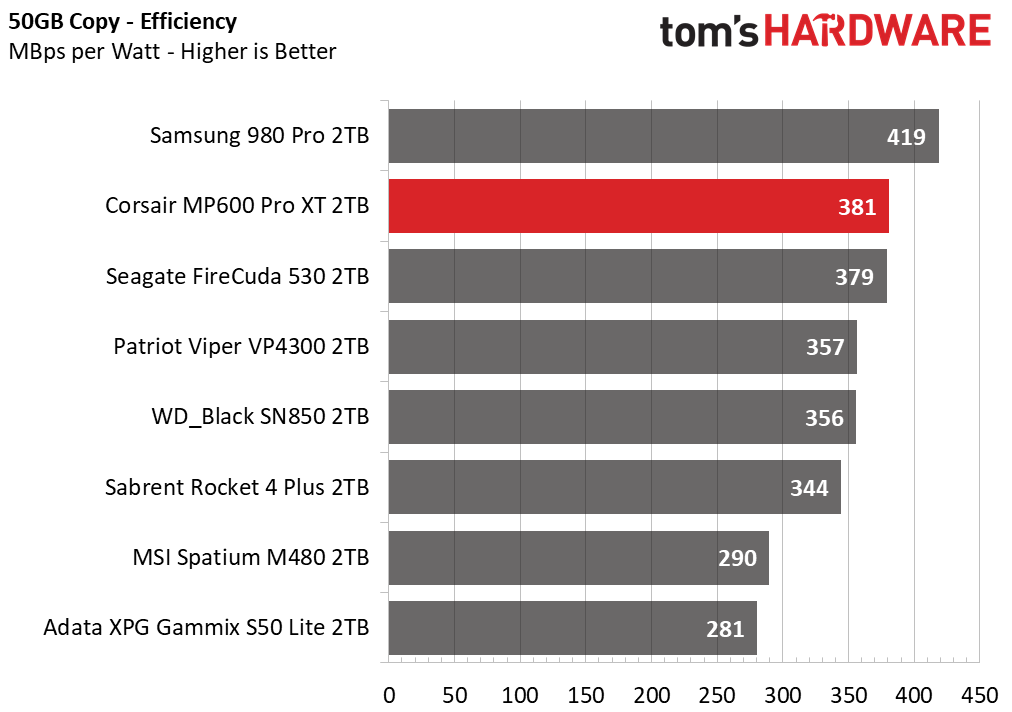
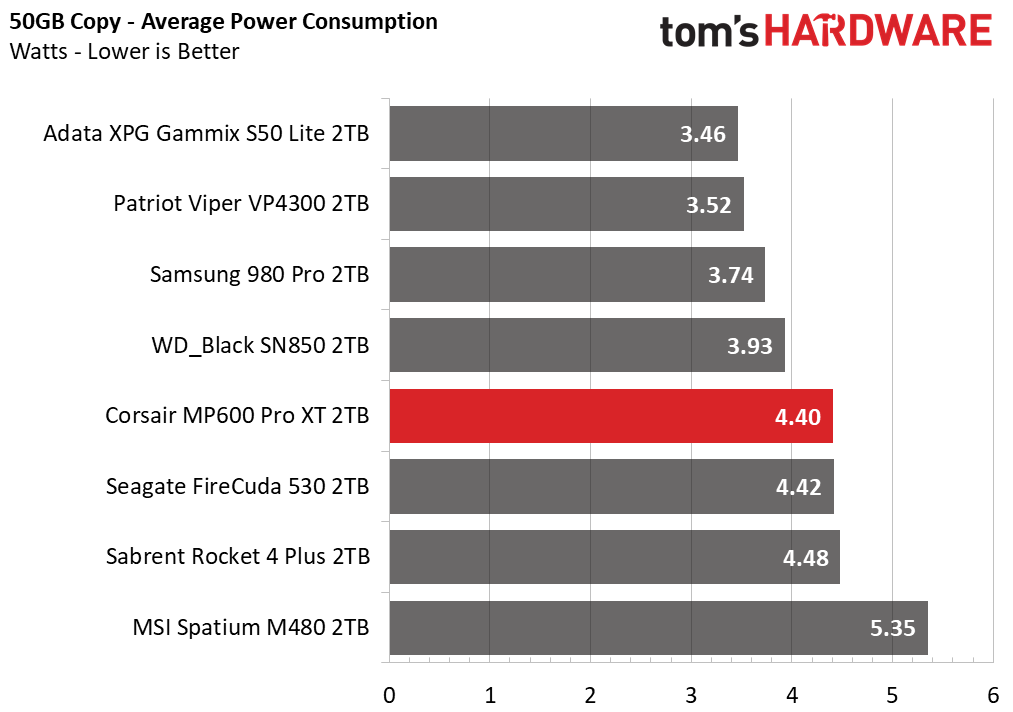


Corsair’s MP600 Pro XT is fairly efficient under load and scored the second-highest MBps-per-Watt score, but its overall high power consumption, even at idle, held it back from being the most efficient SSD we’ve tested.
The MP600 Pro XT remained cool in an open-air test bench. At idle, it hovered around 34 degrees Celsius (C) in our 23C lab. After writing over 1TB of data to the MP600 Pro XT, we measured a peak temperature of 55C, which was well below the 68C throttling point set in its firmware.
Test Bench and Testing Notes
| CPU | Intel Core i9-11900K |
| Motherboard | ASRock Z590 Taichi |
| Memory | 2x8GB Kingston HyperX Predator DDR4 5333 |
| Graphics | Intel UHD Graphics 750 |
| CPU Cooling | Alphacool Eissturm Hurricane Copper 45 3x140mm |
| Case | Streacom BC1 Open Benchtable |
| Power Supply | Corsair SF750 Platinum |
| OS Storage | WD_Black SN850 2TB |
| Operating System | Windows 10 Pro 64-bit 20H2 |
We use a Rocket Lake platform with most background applications such as indexing, windows updates, and anti-virus disabled in the OS to reduce run-to-run variability. Each SSD is prefilled to 50% capacity and tested as a secondary device. Unless noted, we use active cooling for all SSDs.
MORE: Best SSDs
MORE: How We Test HDDs And SSDs
MORE: All SSD Content

Sean is a Contributing Editor at Tom’s Hardware US, covering storage hardware.
-
Phaaze88 "The MP600 Pro XT remained cool in an open-air test bench. At idle, it hovered around 34 degrees Celcius (C) in our 23C lab.Reply
After writing over 1TB of data to the MP600 Pro XT, we measured a peak temperature of 55C, which was well below the 68C throttling point set in its firmware."
What sensor(s) is being read here - the NAND flash or the controller?
When I use Samsung Magician, it reports the flash. I have to pull up hwinfo to see the controller's thermals - which will be hotter. -
Makaveli I don't like the regression in endurance these drivers have had since the original E16 controller Gen 1 versions but overall looks good and much cooler.Reply -
mdd1963 Thank goodness we went from ~7,000 MB/sec sequential reads to.... 7,100! The difference in the user experience will undoubtedly be unparalleled!Reply -
2Be_or_Not2Be Still waiting for the version that runs at the 1,600 MT/s with the 176-layer flash rather than the 1,200 MT/s this one (and the Firecuda 530) runs.Reply
